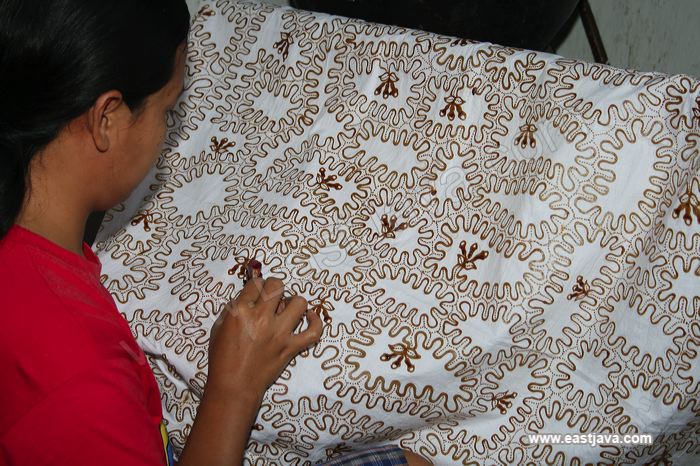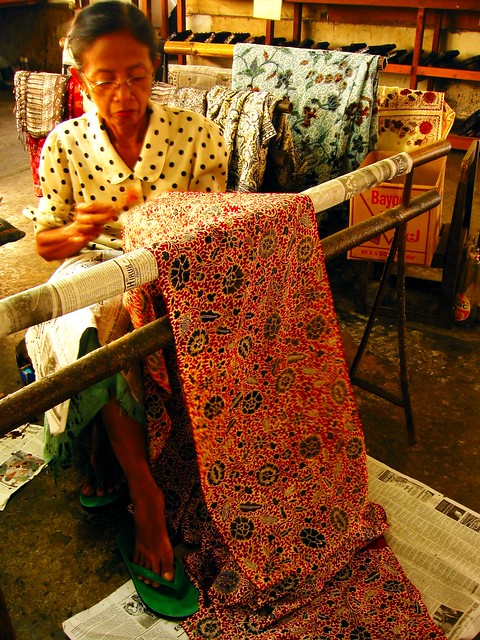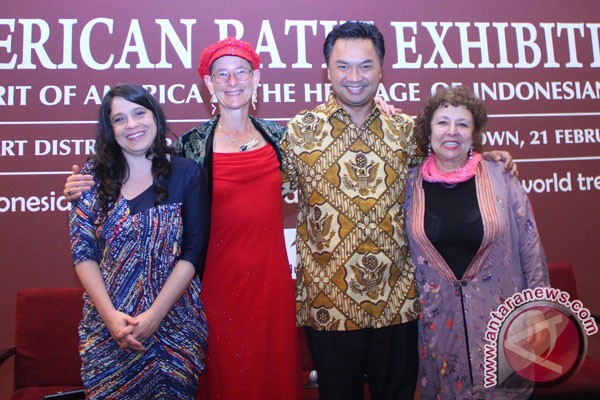 Although no official records began to be known when the batik in Pekalongan , but according to estimates existing in Pekalongan batik around the year 1800 . Even according to data recorded at the Ministry , batik was made there in 1802 , as a small tree motif in the form of clothing material . However, significant progress is expected to occur after a major war in 1825-1830 in the kingdom of Mataram which is often referred to as Java Diponegoro war or war . With the onset of this battle royal family and urged his followers were many who left the kingdom area .
Although no official records began to be known when the batik in Pekalongan , but according to estimates existing in Pekalongan batik around the year 1800 . Even according to data recorded at the Ministry , batik was made there in 1802 , as a small tree motif in the form of clothing material . However, significant progress is expected to occur after a major war in 1825-1830 in the kingdom of Mataram which is often referred to as Java Diponegoro war or war . With the onset of this battle royal family and urged his followers were many who left the kingdom area .  They then spread towards the East and the West . Later in the area - a new area that the family and followers develop batik . To the east of Solo and Yogyakarta batik style batik improve the existing in Mojokerto and vBulletin to spread to Gresik , Surabaya and Madura . Medium westward batik developed in Banyumas , Kebumen , Tegal , Cirebon and Pekalongan . With this migration , the batik Pekalongan that have been there before growing. Over time , Batik Pekalongan experiencing rapid development compared to other regions . In this region batik evolved around the coastal areas , namely in Pekalongan city and regional areas Buaran , Pekajangan and Wonopringgo.
They then spread towards the East and the West . Later in the area - a new area that the family and followers develop batik . To the east of Solo and Yogyakarta batik style batik improve the existing in Mojokerto and vBulletin to spread to Gresik , Surabaya and Madura . Medium westward batik developed in Banyumas , Kebumen , Tegal , Cirebon and Pekalongan . With this migration , the batik Pekalongan that have been there before growing. Over time , Batik Pekalongan experiencing rapid development compared to other regions . In this region batik evolved around the coastal areas , namely in Pekalongan city and regional areas Buaran , Pekajangan and Wonopringgo.
 Batik Pekalongan , between the Past and Today Pekalongan batik became very distinctive because it relies entirely on hundreds of small entrepreneurs , rather than on a handful of large employers have capital . Since many decades ago until now , most of Pekalongan batik production process is done in homes . As a result , closely united with batik Pekalongan. Pekalongan community life that is now divided into two administrative regions , namely Pekalongan and Pekalongan , Central Java . Batik Pekalongan was breath everyday life Pekalongan residents . He lived and lived Pekalongan residents . Nonetheless , together with other small and medium enterprises in Indonesia , Pekalongan batik industry is facing a period of transition . The development of increasingly complex world and the emergence of new competitors , such as Vietnam , Pekalongan batik industry challenged to quickly transform itself into a more modern direction .
Batik Pekalongan , between the Past and Today Pekalongan batik became very distinctive because it relies entirely on hundreds of small entrepreneurs , rather than on a handful of large employers have capital . Since many decades ago until now , most of Pekalongan batik production process is done in homes . As a result , closely united with batik Pekalongan. Pekalongan community life that is now divided into two administrative regions , namely Pekalongan and Pekalongan , Central Java . Batik Pekalongan was breath everyday life Pekalongan residents . He lived and lived Pekalongan residents . Nonetheless , together with other small and medium enterprises in Indonesia , Pekalongan batik industry is facing a period of transition . The development of increasingly complex world and the emergence of new competitors , such as Vietnam , Pekalongan batik industry challenged to quickly transform itself into a more modern direction . Failed to pass through this transition period , Pekalongan batik may only be remembered for generations to come through the history books . At that time, the pattern of batik artisans still work heavily influenced the agricultural cycle . During a period of planting or harvest time , they are fully working in the fields . However , in the period between planting and harvest time , they work completely as batik artisans . AGE has changed . Workers in Pekalongan batik is no longer dominated by farmers. They mostly come from local young people who want to earn a living .
Their lives may depend entirely on the batik work . What Pekalongan batik industry faces today is probably the same as the problems faced by other industries in Indonesia , especially those based on small and medium entrepreneurs . The issue was , among other things , a decline in competitiveness as indicated with the selling price is higher than the selling price of similar products produced by other countries .
In fact , the quality of the products that dihasikan country better than competitor products Indonesian businessmen . The cause of this problem vary, ranging from low productivity and labor skills , lack of initiative entrepreneurs to innovate products , up to the old infrastructure support machine production process .



























